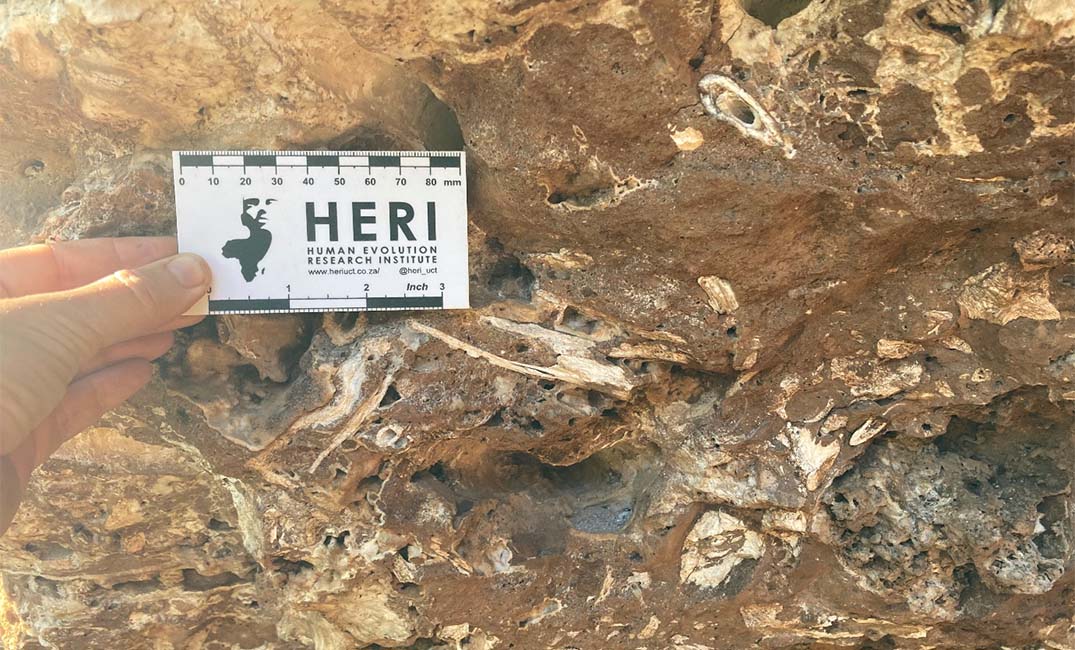A new study of fossil antelope teeth from South Africa’s Cradle of Humankind has challenged a decades-old hypothesis about a dramatic ancient environmental shift that may have shaped early human evolution.
The results are published in the prestigious Palaeogeography, Palaeoclimatology, Palaeoecology journal.
For years, scientists believed that around 1,7-million years ago, the Cradle of Humankind – a UNESCO World Heritage Site famed for its rich fossil record of our early pre-human relatives – transformed from a closed woodland into open grassland. This idea was based largely on the types of herbivore fossils found at cave sites and on chemical signatures in their tooth enamel that reflect diet and vegetation.
This was a groundbreaking theory at the time, and this early research paved the way for this new study.
In an unexpected twist, researchers from the University of Cape Town (UCT) and University of Zürich have now found compelling evidence that this transition never happened – at least not in the abrupt way previously thought.
“Our results show a remarkably stable environment over nearly two million years,” says lead author Dr Megan Malherbe, recent PhD graduate from the University of Zurich’s Evolutionary Morphology group and former UCT archaeology student. “The Cradle of Humankind’s landscape remained a patchwork of open and wooded areas supporting a variety of grazing and browsing animals rather than shifting wholesale from woodland to grassland.”
The traditional model has relied on two main approaches:
- Taxonomic composition – identifying fossil species and assuming their diets and habitats matched those of their modern relatives.
- Stable carbon isotopes – measuring chemical signatures in tooth enamel to infer whether an animal ate more grass (common in open habitats) or more leaves (typical of wooded areas).
Both methods, while valuable, have limitations. Ecological roles can change over evolutionary time, meaning extinct species may not have behaved exactly like their modern counterparts. Many previous studies also grouped fossils into broad age ranges, potentially missing shorter-term shifts in vegetation.
To address these limitations and to test the original hypothesis, the team turned to mesowear analysis, a method that examines how an animal’s teeth wear down during its lifetime, revealing whether it consumed more abrasive grasses or softer leaves.
As part of her PhD research, Dr Malherbe examined 623 fossil teeth from seven caves in the Cradle of Humankind – Cooper’s Cave, Drimolen, Haasgat, Hoogland, Malapa, Sterkfontein, and Swartkrans – spanning between 3,2-million and 1,3-million years ago. Crucially, these sites were dated directly using uranium-lead dating, giving the team a much more precise timeline than was available for the previous studies.
The mesowear results were consistent across all seven sites and all seven antelope tribes studied. The fossils showed a stronger signal for grazing than browsing, suggesting that grasslands were always an important part of the environment.
Instead of detecting a sudden change at 1,7-million years ago, the team found that this grazing signal remained constant over the entire 1,9-million-year period. This points to a long-term heterogeneous landscape – a mix of grassland and woodland rather than a wholesale ecological shift.

Fossil-bearing sediment at the Cradle of Humankind.
Credit: Dr Megan Malherbe
“We often think of ancient environments changing dramatically in response to climate shifts,” explains Associate Professor Robyn Pickering, co-director of UCT’s Human Evolution Research Institute (HERI) and an author of the study. “But our data indicates that, at least in this part of southern Africa, the landscape was a stable mosaic. That stability would have had significant implications for the animals, including early pre-humans living there.”
Pickering goes on to stress that the previous findings are not “wrong” – science progresses by testing hypothesis. In this case, new methods (mesowear and U-Pb dates) and a relook at an old explanation have given us a new hypothesis that will need testing.
One of the study’s most intriguing findings was comparing members of the same antelope tribe living at the same time and place. For example, in Swartkrans Member 2, different species within the Alcelaphini tribe showed different feeding strategies: some were grazers, and some were more generalist feeders.
This variation, explains Dr Malherbe, suggests that some extinct antelopes were dietary generalists, adapting flexibly to the resources available rather than sticking to a narrow feeding niche.
The research also revealed that certain bovids – bushbuck, reedbuck and springbok – had feeding preferences very different from those of their modern relatives.
This is a cautionary note for palaeontologists: inferring ancient diets and habitats by analogy with living species can sometimes be misleading.
“The Cradle of Humankind has yielded fossils of several early pre-human relatives including Australopithecus, Paranthropus and early Homo,” says Dr Malherbe. “Understanding their environments is critical for reconstructing the pressures and opportunities that shaped human evolution.”
By showing that the landscape remained a diverse mix of habitats for millions of years, Dr Malherbe says the study suggests that early hominins may have had long-term access to various food sources and shelter options – conditions that may have supported behavioural flexibility.
“Rather than adapting to a single, sweeping environmental change our relatives in the Cradle of Humankind seem to have thrived in what appears to be a more stable, but varied environment,” Dr Malherbe says. “That kind of ecological stability might have played a bigger role in our evolutionary story than we’ve appreciated.”
The team emphasised that their findings highlight the importance of regional, site-specific studies within accurate chronological frameworks.
